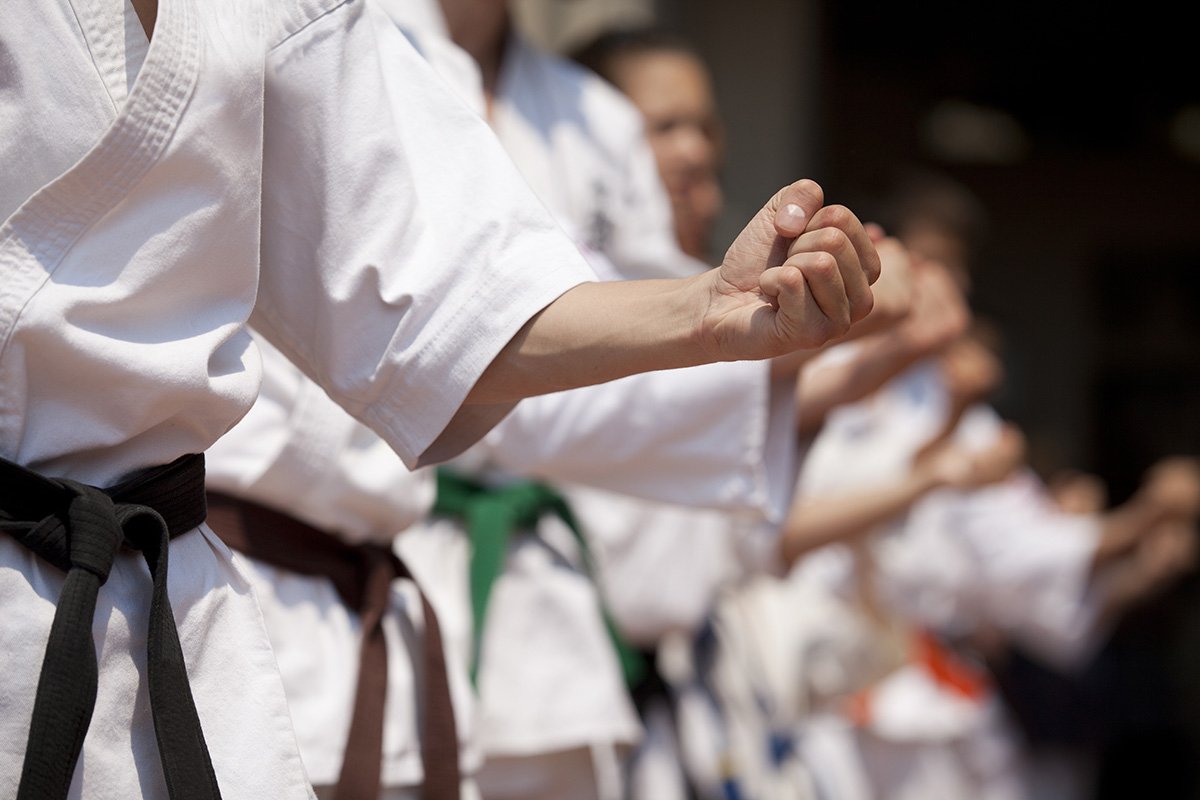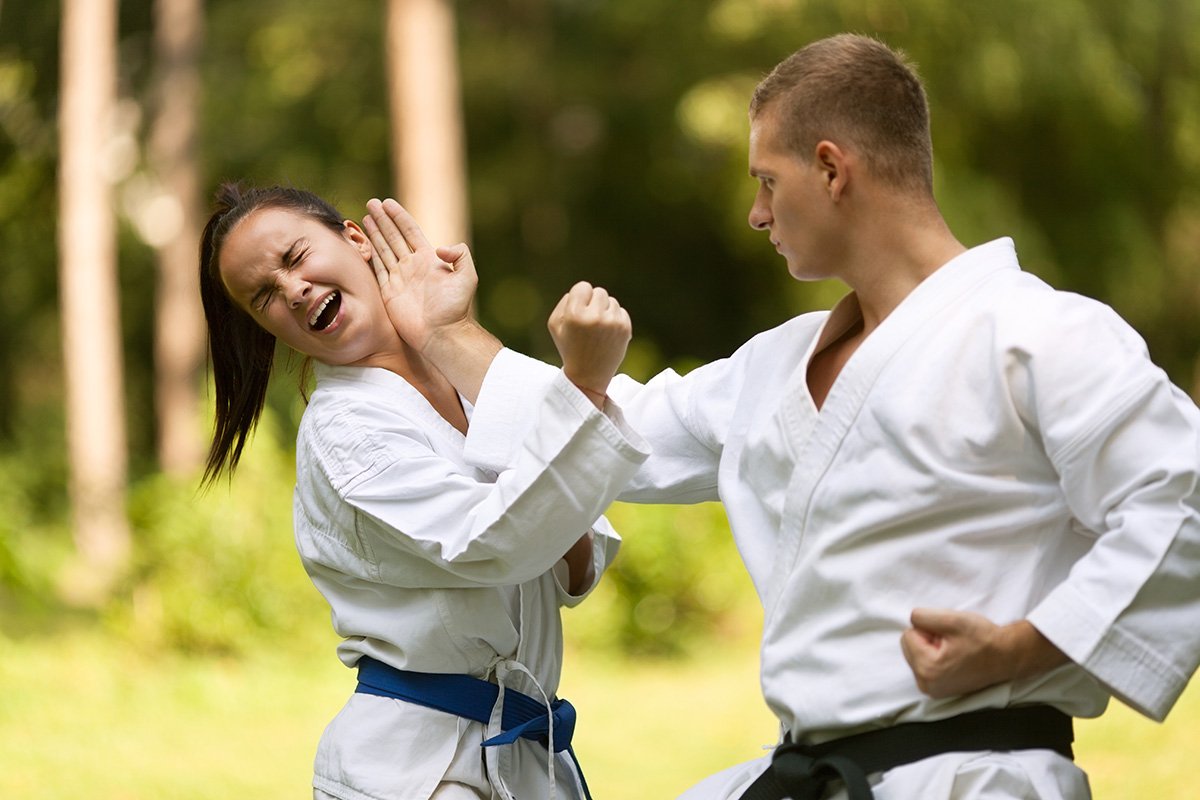Karate, which has been included as an official event in the Tokyo Olympics, is one of the many Japanese martial arts that attracts particular attention from foreigners. However, when explaining karate to people from overseas, there are so many different types that it can be hard to know what to talk about.
So, this time I would like to introduce in detail the two types of karate and the representative styles of each.
There are two main types of karate

It is said that there are around 200 types and styles of karate in total. However, since karate is popular all over the world and has many derivative styles, the reality is that it is impossible to grasp the total number.
When thinking about the classification of karate, it is recommended to start with the following two representative types.
Traditional Karate (Non-Contact Karate)
Traditional karate is a general term for karate that avoids direct strikes.Traditional karate, which is based on the traditional techniques of the old school and is practiced in matches and training, has the following characteristics:
- Emphasis on kata practice
- Emphasize philosophy and etiquette
- The distance is fast and wide
- No low kicks
- A rank system is used
Practical Karate (Full Contact Karate)
Practical Karate is a general term for karate that employs rules based on direct striking. Practical Karate was popularized by Mas Oyama, the founder of Kyokushin Karate.
- Kicks and punches are delivered to areas other than vital parts like the face, and the outcome is determined by the damage done.
- The distance is shorter than in traditional karate
- There are more combinations than traditional karate
Representative styles of traditional karate

The four major styles of traditional karate are:
Shotokan style
It is a style that is popular all over the world and is the most widely studied. The strength of Shotokan-ryu is its ability to deliver a kill with a single blow from a long distance. Each technique is dynamic, and the weight of the techniques makes it easy for spectators to see how cool they are.
Goju-ryu
This style is strong in striking from close range and grabbing and throwing. The training is based on two things: building a body that can withstand attacks from the opponent, and strengthening the inside through Sanchin breathing. It is generally called defensive karate.
Shito style
This style of karate, which draws on the traditions of both Shuri-te and Naha-te, has beautiful forms. This style places particular emphasis on defense, and is characterized by parrying the opponent's attack and then counterattacking. In addition to punches and kicks, the techniques also include throws and counter techniques.
Wado-ryu
It is a style that combines the unique karate techniques of Shotokan with mainland jujutsu. Because it is based on jujutsu, it tends to have a lot of throwing and leg techniques. Another major feature of Wado-ryu is that it uses attacks similar to joint locks after knocking down the opponent.
Representative styles of practical karate

The five most famous types of practical karate are:
Kyokushinkaikan
It is the home of full-contact karate, which was founded by Masutatsu Oyama and advocated direct striking. Currently, Akiyoshi Matsui is the representative. Most full-contact karate is derived from Kyokushinkaikan. Daily training includes kata practice, prearranged sparring, and more.
Shinkyokushinkai
This is the name of the organization, which was established after the death of its founder, Mas Oyama, and is headed by Midori Kenji. It is characterized by a high level of media exposure, and the world championships are even broadcast on television. This style's tournaments place great importance on the basics. Furthermore, the tournaments are subdivided by weight, age, and belt color, making it possible for a wide range of people to enjoy karate, which is a major attraction.
Kyokushinkan
This organization was founded by former Kyokushinkaikan chief advisor, Rozan Hatsuo. Its mission is to properly inherit, popularize, and develop both the ideals of martial arts karate and the spirit of old-style Kyokushin, without being swayed by the trends of the times. It is also the only organization among the Kyokushin splinter groups that holds matches that allow hand attacks to the face.
Seido Hall
This is an organization that was established when Kazuyoshi Ishii left Ashihara Kaikan and became independent. It allows for gripping and is closer to actual fighting. At Seido Kaikan, only advanced practitioners can receive K-1 instruction. Masaaki Satake, who once led the Japanese K-1 heavyweight division, also comes from this style.
Daido Juku
In addition to the no-face rules of Kyokushin Karate, the style incorporates a variety of techniques such as headbutts, throws, ground fighting, and striking. The organization's profile page also describes it as a "pioneer of mixed martial arts." Daido Juku's major features include rules that are easy for spectators to understand, as well as a high level of practicality and safety. Participants wear specially developed protective gear for the head.
summary
Karate is attracting a lot of attention from overseas, and there are so many different types of it is impossible to grasp the total number.
So, when foreigners ask me about Japanese martial arts and karate, I first tell them that there are two types: traditional karate, which is based on the traditional techniques of the old styles, and practical karate, which allows for direct strikes.
If you are asked for a more specific explanation, it would be a good idea to tell them about the four major styles of traditional karate and the five most popular styles of practical karate.
This article has been partially re-edited by KARUTA from an article originally published on "Nihongo Biyori."
Any unauthorized reproduction or use of the contents, text, images, illustrations, etc. of this website is strictly prohibited.
